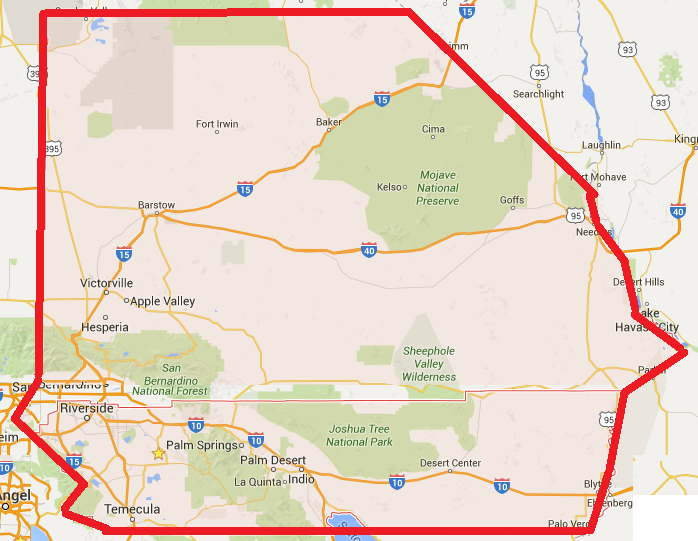Cities in the Inland Empire:
County of Riverside, Banning, Beaumont, Blythe, Calimesa, Canyon Lake, Cathedral City, Coachella, Corona, Desert Hot Springs, Hemet, Indian Wells, Indio, La Quinta, Lake Elsinore, Moreno Valley, Murrieta, Norco, Palm Desert, Palm Springs, Perris, Rancho Mirage, Riverside, San Jacinto, Temecula, Wildomar, County of San Bernardino, Adelanto, Angelus Oaks, Apple Valley, Barstow, Big Bear Lake, Bloomington, Chino, Chino Hills, Claremont, Colton, Crafton, Crestline, Fontana, Grand Terrace, Hesperia, Highland, Joshua Tree, Lake Arrowhead, Loma Linda, Lucerne Valley, Mentone, Montclair, Needles, Ontario, Rancho Cucamonga, Redlands, Rialto, Running Springs, San Bernardino, Twentynine Palms, Upland, Victorville, Wrightwood, Yermo, Yucaipa, Yucca Valley,
Map of Inland Empire:
San Bernardino County Facebook
Learn about IE below from Wikipedia….
The Inland Empire (I.E.) is a metropolitan area and region of Southern California. It is situated directly east of the Los Angeles metropolitan area. The term “Inland Empire” is most commonly used in reference to the U.S. Census Bureau federally defined Riverside-San Bernardino-Ontario metropolitan area, which covers more than 27,000 square miles (70,000 km2). The metropolitan area consists of Riverside County and San Bernardino County.
According to the Census Bureau, the counties of San Bernardino and Riverside are home to over 4 million people, and together they make up the 13th-most populous metropolitan area in the United States, and the third-most populous in the state of California.[2] Most of the area’s population is located in the southwest of San Bernardino County and the northwest of Riverside County. At the end of the 19th century, the Inland Empire was a major center of agriculture, including citrus, dairy, and wine-making. Agriculture declined through the 20th century, and since the 1970s a rapidly growing population, fed by families migrating in search of affordable housing, has led to more residential, industrial, and commercial development. The U.S. Census Bureau also combines the Los Angeles metropolitan area and the Inland Empire into one larger region known as the Greater Los Angeles Area with a population of over 17 million.
